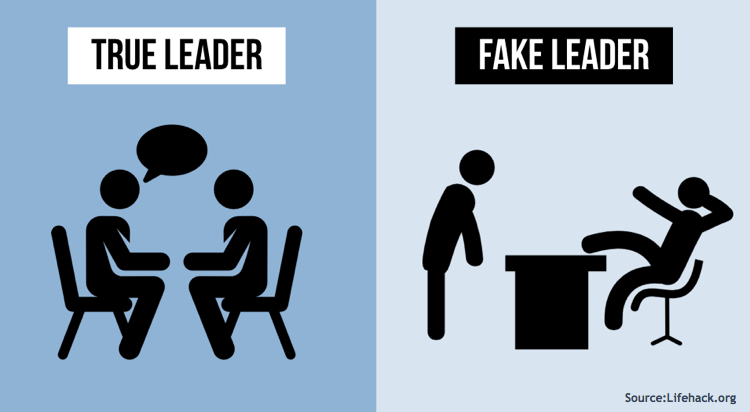Change is ever present. The timing and effectiveness of communication around change is critical. Companies have all the information, yet employees can feel in the dark. It doesn't have to be this way. You need a solid game plan.
Why does it seem so difficult to communicate organizational change such that employees feel informed and connected? There just has to be a better way given a company has all the answers – what, when, how, why and to whom. Employees want a thoughtful approach and transparency, not perfection.
Unfortunately, communication efforts during organizational change are rarely lauded as fantastic. Mediocre communication punishes employees. The quality of the communication efforts ties directly to how well your employees will navigate any ambiguity.
As leaders, you can fill the gaps for your people. Sometimes you will have the support you need; other times you may not. Either way, you are the glue here.
[If you are short on time – get a PDF of this post so you can read later or print, just click here.]
An All Too Common Theme – You Guessed It
Over the past few weeks, I’ve spent time with several groups of friends. Part of the catch ups naturally went to work and how it’s going. The responses ran the gamut from eye rolls, a few “not greats” up to a rousing “ok.” Whohoo!
Not exactly rousing responses.
Even a quick scratch of the surface revealed the common underpinning to the responses — a subpar communication approach around changes in their organizations.
People don’t like and even distrust change imposed on them. Also, people focus on the process if they don’t like the outcome. All of the above is probably present in their underwhelm. However, it’s also highly likely they are right. The communication flow and cadence are often hit or miss.
Uninformed employees create a narrative. Be that story right or wrong; it is fatiguing and time-consuming for everyone. While managers don’t intend to misstep, it happens all too often, in all kinds of organizations.
The malaise and disinterest expressed by my friends is not something any organization wants simmering. You pay a hefty price if it boils over.
Change Management Realities
Before we go further, it’s worth noting that large-scale organization or transformational changes require substantial planning for execution. There is terrific expertise you can access. You should engage it as needed.
However, change is constant in today’s business environment. Most are not transformational. Changing structures, reporting lines, market approaches, operational processes, and leadership are standard stuff. People get these changes occur. Keeping your people engaged is vital to have a fighting chance at realizing the intended benefits.
You might have excellent, modest or no support as it relates to how you communicate with your team. Finally, you may need to lead better than your organization is leading you.

Hey, What’s Going On Here
In New York City one of these customized signs is posted on every block where road or sidewalk construction or renovation is going on. So why do they go to the trouble of doing this?
NYC learned the hard way that construction changes things in a neighborhood. It creates:
- A hazard – the scene demands extra, in some case a lot of diligence
- An eye (and ear) sore – the street will be a mess
- An inconvenience – may require people to walk or drive differently.
These posted signs came about because previously people weren’t advised of the hazards. More important, they didn’t know “why” the eyesore or inconvenience. People were getting hurt and complaining. NYC knew it needed to be timely, transparent and specific about what is going on and why.
A Roadmap To Help You Communicate Organizational Change
You can take a page from NYC’s playbook to address the hazards, the eyesore and the inconvenience present in your change situations. The following roadmap can help your approach to communication.
Before You Get In Front
Start where people are. Each change scenario is different. Your team has a different a knowledge level depending on the situation. How close to home do the changes strike either for them or people they know. Has there been any communication thus far? Thinking through the big things and the nuances are critical to building out your messaging and approach.
Engage your leading talent. Bring your key leaders and a short list of top talent under the tent. Don’t let them hear the message sitting in a conference room in a broader group. If you can’t trust them with the information, they don’t fall into one of those categories (key leaders or leading talent).
Engage 1:1 with those personally impacted. People whose role or job is directly affected obviously need specific conversations. General guidance for these conversations:
- Straight talk on the impact on their position or if you don’t yet know.
- Offer advice on anything they should or shouldn’t do during this time
- Call them “to” something – focus on what you want it to look like (what) vs. activities (how)
- Agree on timing for an update
Rehearse. What and how you communicate changes is critically important. You want to nail it. It is NOT about having it scripted. Instead, it is allowing yourself the headspace to think through what you want to say, key messages and how you will handle questions. For topics you are anxious about, head them off. Address them in your outbound comments.

A Few Cautionary Tales When You Communicate Organizational Change
Cautionary Take 1: Don’t Rely On The Organization To Tell Your People
“All employee” emails are neutral on their best day. They are high level. Words get parsed, and it can lead to more questions than answers. While you do need to know what’s said in these communications to deal with issues, they aren’t your answer.
Cautionary Tale 2: Compensation & Reporting Line Changes Are Sticky.
The obvious here I know. My experience is that how people get paid and who they report to are tricky regarding communication. There is a particularly intense version of rehearsing and preparing for Q&A when these topics are part of the change. This preparation is a lot of work, no getting around it. That said, done right, you engender a lot of respect and loyalty even if the message isn’t popular.
Again, excellent change management communication is not most people’s experience. So your approach will be a contrast.
[Here is a related post touching on how great ideas from corporate don’t always translate!]
Cautionary Tale 3: Your Message and Your Demeanor Need To Match
It’s always essential for leaders to display consistency between what they say and how they say it. This need magnifies as you communicate change. People are listening. More importantly, people are watching intensely. Are you committed to what you are saying? Are they your words? Do the words match your physical presence.
Forbes’ refers to this as “communicating congruently” and articulates the issue and the problem:
And whenever the verbal and nonverbal channels of communication are out of sync, most people will rely on the nonverbal message and disregard the verbal content.
Keep in mind as you rehearse. Frequently this is overlooked in preparation.
See the full Forbes’ article Communicating Change: What People Want To Hear And What They Need.
Get Out In Front
1. Hold a meeting. It sounds simple. The absolute preference is for face to face and at a minimum video conference for those who can not attend due to work location. Not all change situations require the same devotion of time. Make the meeting length appropriate, informative and an open forum.
2. Explain What Is Going On. At the session and beyond, explain the actions and rationale. The explanation should include:
- What is happening?
- Who will it impact?
- When is it happening?
- How will it look and feel – now, along the way?
- Where will it take the organization?
The key is being real in what you say and how you say it. No sugar coating and no drama are good guideposts. Acknowledge their patience, support, input and thank them.
3. Give Context. Provide relevant information and data to create understanding around the case for change. The why. Tell the story. Explain impacts to people and processes. Include how changes will make the organization better and what the result is for them.
4. Explain The Risks. Explain the hazards if your organization doesn’t make the changes. Include the consequences of leaving things as they are (e.g., stagnant growth, being passed by competitors) and the impact on them.
5. Engage Them In The Work. People want to know what they are supposed to “do.” Focus them on what good looks like during this process. Engage them in contributing positively and empowering them. For example, have them build a client communication plan vs. handing them a script. The latter never works anyway!
6. Give The Next Milestone. People sitting an airplane ready to take off “just” want to know how long they will be on the runway. Silence is brutal. Silence is disrespectful. Be clear about the next update – when and what they can expect. If at all possible, beat the deadline by a hair.
7. Explain How It Impacts You. They will ask and even assume if you don’t fill the white space. People will worry about you. You should worry if they don’t. (Side note, how you handle ambiguity serves as a visible model for your team.)
8. Provide An Outlet. Explain how they access more information on specific questions relative to them, their customers, a particular process of importance, etc.
After You Get Out In Front
Engage your truth tellers and influencers. Find out what is going on for real. What are people saying? They can decipher the noise – is it the process, the outcome or both.
Do some couch time. Some people will want a 1:1 with you. Some you will want a 1:1. Trust me it is two separate lists! Do the necessary time. It will pay off in multiples.

Leadership Attributes On Display When You Communicate Organizational Change
There is an element of doing the work here – preparation, rehearsing, 1:1 time. There is also how you show up as a leader. The leadership attributes on display impact your ability to influence people and keep them focused.
These are my top 5 for managing change:
1. Empathy – Your people are going through something. Be mindful without over indexing to it.
2. Candor – Be real. Share what you know, when you know it.
3. Patience – People will want your time. It can be exhausting, but it matters.
4. Attention to detail – Focus on timing, rehearsal, and execution. Most important is keeping your commitments. These items are “the process.” Attention to detail tells people you care and have your hand on the wheel.
5. Optimism – It doesn’t require acting as if everything is perfect or even ok. Sometimes it is not. Instead, it is demonstrating determination and confidence about where you all are going and how you will get there. People will take your lead.
The Wrap
While there can be a lot on the line for people, trust me they don’t need to make notes during your group meetings, 1:1’s. They remember everything you say. And some things you did not.
Change communication can define your leadership for people. Remember, they are going through something. Because of that, they remember what you say and how you show up.
So…what do your people say about how you communicate organizational change? And, how you show up doing it? Do you know?
Your people crave, and your business needs you to be reliable, open and consistent during times of change.
Show them what they want to see!
CLICK HERE FOR A TOOL to support your communication efforts.
QUESTION:
What do you find as the most significant challenge in managing communication around change?
Please know that sharing your comments below & across this audience matters. A robust conversation to benefit all can and will break out! Thank you in advance for sharing and engaging.
Other Tools You Can Use
For a printable PDF of this post, click here.
Dig Deeper
A Fast Company article: The simple yet overlooked key to great communication.




Great perspectives and absolutely spot on as I see these common mistakes made daily by my Enterprise customers. Communicate, Communicate, Communicate!
Thanks, Mike. So true…..the good news is it’s really in control of the organization. Sometimes I think what works against the effort needed to do it well — is that when it goes well it almost looks easy, and like it doesn’t take much.